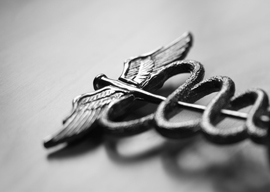
November 13, 2014

Source: Shutterstock
Reading the November issue of Literary Review (a British monthly, somewhat like the New York Review of Books but less claustrophobically liberal), the following thing caught my attention. It’s in Donald Rayfield’s review of Stalin, Vol. 1: Paradoxes of Power, 1878-1928, by Stephen Kotkin:
Medical historians conclude that Stalin was in more or less acute muscular, neurological, and dental pain all his adult life … Stalin’s brutality towards the medical profession, hitherto sacred to all Russian authorities, hints at the frustrations of a man in unremitting pain.
That brought to mind a remark I”ve seen attributed to Winston Churchill: “Most of the world’s work is done by people who are not feeling very well.” For persons of Stalin and Churchill’s generation”they were born four years apart”I”d bet that was true.
Churchill himself had, according to his biographer, “been prey to ills since childhood. Some of his vacations were taken on doctor’s orders; others were interrupted by bouts of influenza or infectious fevers.”
Until the middle of the last century there wasn”t much relief for illness, even if you were a Russian despot or a British prime minister. The title of Lewis Thomas’s 1983 book about medicine tells it all: The Youngest Science.
Thomas (1913-1993) was a doctor, the son of a doctor and a nurse. The early chapters of his book are devastatingly frank about the near-uselessness of doctoring prior to the introduction of antibiotics in the mid-1930s.
Explanation was the real business of medicine. What the ill patient and his family wanted most was to know the name of the illness, and then, if possible, what had caused it, and finally, most important of all, how it was likely to turn out …
During the third and fourth years of [medical] school it gradually dawned on us that we didn”t know much that was really useful, that we could do nothing to change the course of the great majority of the diseases we were so busy analyzing, that medicine, for all its façade as a learned profession, was in real life a profoundly ignorant occupation …
Once you were admitted [to hospital] … it became a matter of waiting for the illness to finish itself one way or the other … Medicine made little or no difference.
This was actually an advance on medicine as practiced before the 20th century, when medical procedures like bleeding, cupping, and purging all too often did make a difference, but in the wrong direction. Whether, as is commonly believed, the multiple bleedings administered to George Washington in his last illness were what killed him, they surely didn”t help.
In the company of medical people who know the history of their craft you can get a good discussion going about the exact date after which medical attention was more likely to help than harm you. Opinions generally settle somewhere between 1910 and 1940.
That’s within living memory. People of the generation before my own had little to hope for from medicine. The more realistic among them knew this. My own father, born 1899, regarded the entire medical profession with fear and mistrust. A hospital, he believed, was a place where poor people went to die. A major theme in the background noise of my childhood was the voice of my mother”a professional nurse”nagging Dad to go see a doctor about some ailment he was suffering. “Why won”t you at least go see him? He won”t HURT you.” Dad knew better. Most things mend by themselves. He lived to be 85, dying at last of pneumonia, which was known to people of that generation as “the old man’s friend.”
It wasn”t all negatives before “the early 1950s, when medicine was turning into a science” (Lewis Thomas). There was nursing; there was surgery; there were a handful of useful drugs.
Nursing”the art of keeping patients clean, comfortable, and cheerful”must have saved far more lives than doctoring in the long dark ages before antibiotics. Florence Nightingale (a significant mathematician, by the way) has to be reckoned one of the great benefactors of humanity.
Surgery before modern anesthesia (which arrived in the 1840s) was a horror show. Fanny Burney’s account of her mastectomy in 1811, when she was 59, is hard to read. She survived it, though, living to be 87, and even stayed friends with the surgeon.
The main component of the surgeon’s art was speed“getting the job done before the patient died of shock.